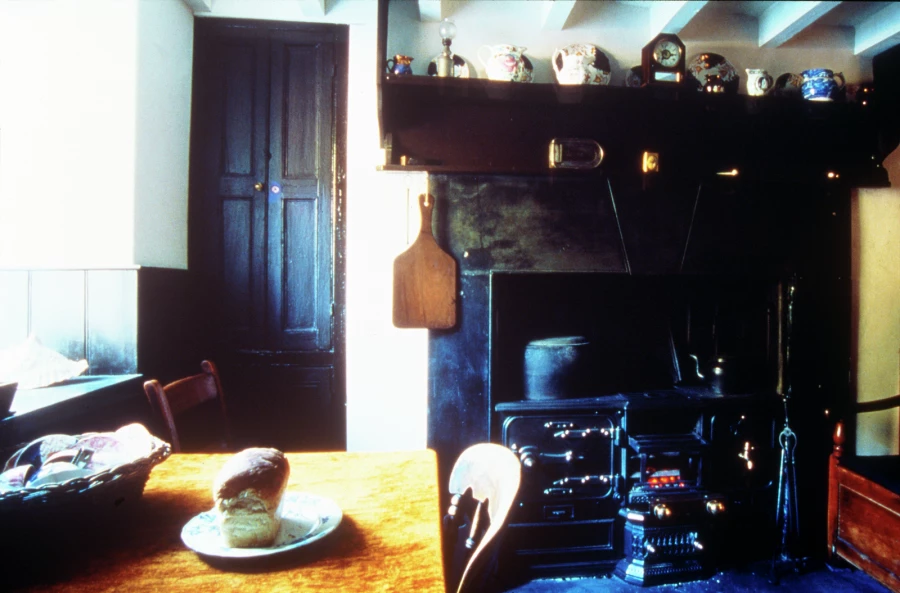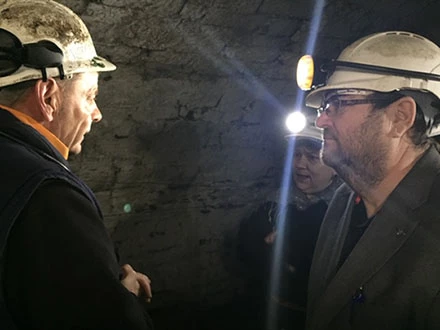Minecraft Your Museum: The Winners!
, 25 July 2020
We have had fantastic entries from all areas of Wales & beyond! The standard is truly incredible! Visiting these virtual museums has been great fun and an incredible honour! Many thanks to everyone who took part in the Minecraft Your Museum Competition!
We hope you enjoyed taking part as much as we enjoyed visiting your Museum!
The video below shows entries from all our participants and highlights the winning entries.
Congratulations to everyone who took part in this (woolly) mammoth of a challenge!
This competition shines a light on the talented young 'crafters' we have in Wales! They have created the most beautiful Museums and wonderful collections. They also thought of everything a visitor might need from cafes, to play areas, shows and of course toilet facilities. They are digital architects, curators and Museums managers all rolled into one! The digital skills they have used in both creating and presenting is something to shout about! Digital Literacy being a cross-curricular theme in Wales is really paying off.
We are delighted to announce that the People's Collection Wales will be creating a collection of all the entries so others too can appreciate the amazing museums created. Once we have permission from participants,we will update this blog with links. People’s Collection Wales is a National digital collection that gathers history from the People of Wales.
We are delighted to announce that the Minecraft Your Museum competition has been shortlisted for the Family Friendly Museum Award From Home.
The Winners:
1st place: Prize VIP trip for your class to your chosen museum (when safe to do so). Plus two reserved tickets for the Museum Sleepover - Dino nights at home & certificates.
| Year 2 - Thomas Denney |
| Year 3 - Carys Lee |
| Year 4 - Gwilym Davies-Kabir |
| Year 5 - Osian Jones |
| Year 6 - Caitlin Quinn & Lucy Flint |
| Group category: Marc, Zach and Matthew Chatfield. |
2nd place: Two reserved tickets for the Museum Sleepover - Dino nights at home & certificates!
| Year 2 - Monty Foster |
| Year 3 - Nico Poulton |
| Year 4 - Luca Dacre |
| Year 5 - Chloe Hayes |
| Year 6 - Bethan Silk |
| Group category - Emily Jones and Daisy Slater |
3rd place: Two reserved tickets for the Museum Sleepover - Dino nights at home & certificates!
| Year 2 - Meilyr Frost |
| Year 4 - Arwen Silk |
| Year 5 - Zach Waterhouse |
| Year 6 - Evie Hayden |
| Group category - Theo Harrison, Thomas Sommer, William Howard-Rees |
Highly commended: One reserved ticket for the Museum Sleepover - Dino nights at home & certificates!
| Year 2 - Mali Smith |
| Year 4 - Oliver Jarman |
| Year 5 - Ffion Ball |
| Year 5 - Zac Davis |
| Year 6 - Scarlett Foster |
| Year 7 - Wren Ashcroft |
| Group category - Bella Hepburn and Phoebe Wilson |
| Group categroy - Gwen Fishpool, Ethan Coombs and Sofia Mahapatra |
To be awarded Minecraft Your Museum certificates for completing the challenge!
| Rita Jones |
| Thomas Silk |
| Elliott Thompson |
| Entry 1 (Gelli Primary) |
| Entry 2 (Gelli Primary) |
| Entry 3 (Gelli Primary) |
| Entry 4 (Gelli Primary) |
| Alis Jones |
| Andrew Poulton |
| Cari Hicks |
| Elyan Garnault |
| Ethan Beddow |
| Evan Hicks |
| Greta Wyn Jones |
| Joshua Akehurst |
| Jude Clarke |
| Matilda Turner |
| Ronan Peake |
| Tomos Dacey |
| Zac Jonathan |
| Cally Sinclair |
| Chris Jones |
| David Hughes |
| Durocksha Eshanzadeh |
| Eifion Humphreys |
| Emilia Slater |
| Emily Akehurst |
| Freya Powell |
| Harriet Heskins |
| Henry Lansom |
| Holly Wyatt |
| Ioan Davies |
| Isaac Smith |
| Jessica Thomas |
| Kayden Matthews |
| Lewis Hopkins |
| Macy Jo Tolley |
| Maisie Boyce |
| Mia Livingstone |
| Noah Pearsall |
| Oliver Reeves |
| Peyton Creed |
| Phoebe Skinner-Quinn |
| Rufus Huckfield |
| Sam Cowell |
| Sam Rees |
| Sophie Vickers |
| Sumaiyah Ahmed |
| Tomos Pritchard |
| Will Heskins |
| Zoe Murfin |
| Abhay Prabhakar |
| Alexander Newman |
| Angharad Thomas |
| Floyd Thomas |
| Gwydion Frost |
| Morgan Trehearne |
| Rhys Tinsley |
| Ziggy Dyboski-Bryant |
| Ben Fox-Morgan |
| Emilia Johns |
| Trixx Flixx |
| Dylan, Rhiannon, William Bringhurst Dylan, Rhiannon & William |
| Ellouise Grace James Matthews |
| Pippa and Monty Walker |
| Daniel Brenan & Micah Bartlett |
| Chloe and Grace Chamberlain |
The Competition
Competition for 6-11 year olds.
The Challenge: Use your imagination to build your dream museum in Minecraft. Decide how you would like the building to look and fill it with some of your favourite Museum objects. They could be anything from any of our seven museums, such as a Dinosaur, a Roman coin or a house from St Fagans!
Prizes: Win a VIP trip for you & your whole class to your chosen museum - when schools re-open! A prize will be awarded to each year group (Yrs. 2-6).






